🇹🇷 Turkey’s Role in Regional Instability: Arms Deals, Proxy Conflicts, and Security Dilemmas
In 2025, Turkey stands at the heart of multiple regional tensions — supplying arms to conflict zones, maneuvering through NATO commitments, and projecting power in the Middle East, Caucasus, and North Africa. While Ankara positions itself as a rising regional force, its military-industrial complex, drone exports, and diplomatic tightrope act have drawn increasing scrutiny from allies and rivals alike. From Libya to the South Caucasus, Turkey’s foreign policy is a potent mix of realpolitik, ambition, and unresolved contradictions.
This article analyzes Turkey’s evolving strategic posture — the drivers of its regional assertiveness, its entanglement in proxy conflicts, and the security risks it poses to both neighbors and alliances like NATO and the EU.
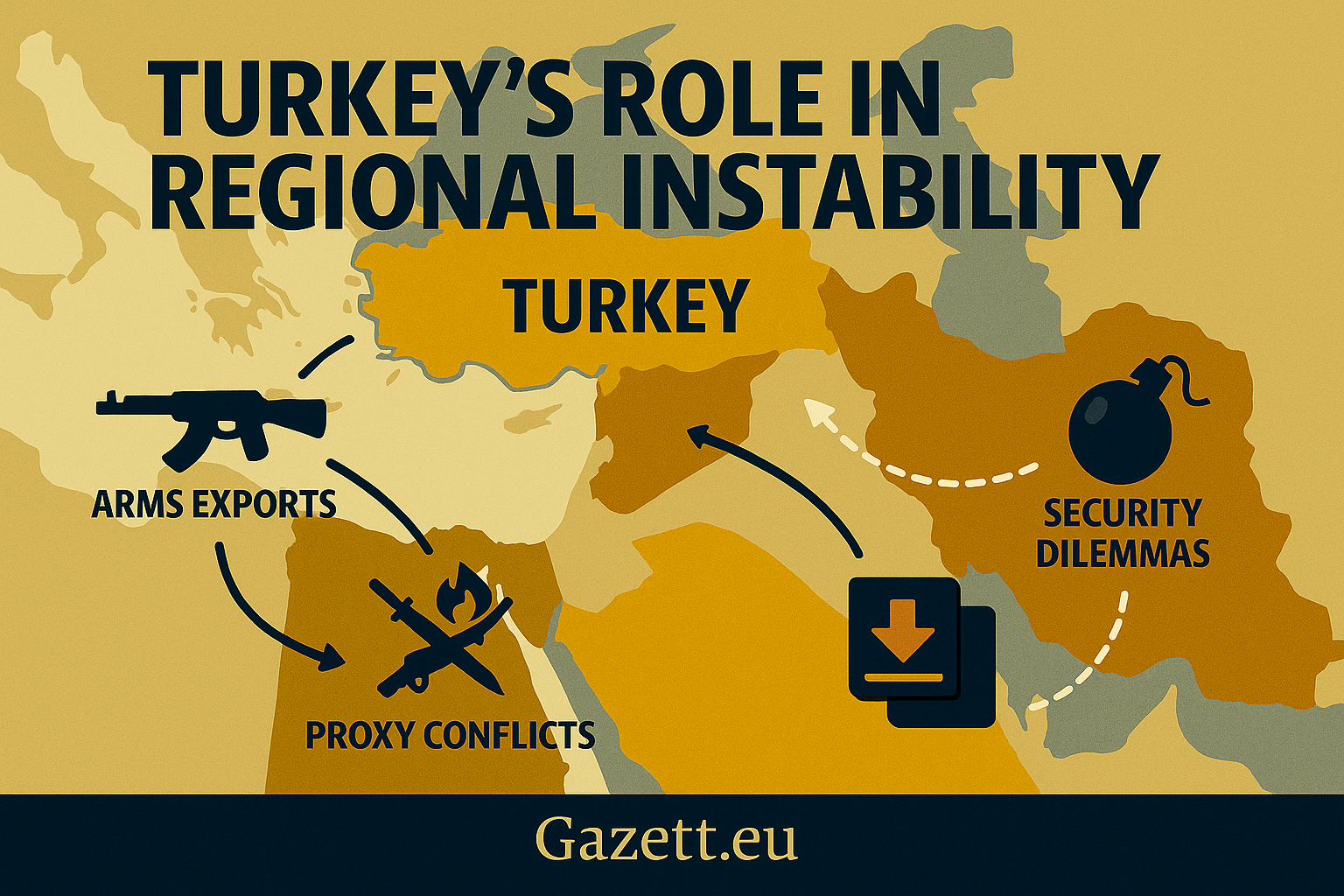
📚 Article Overview
- 🛩️ Turkey’s Military-Industrial Rise: Drones, Tanks, and Missiles
- 🔥 Proxy Conflicts: Libya, Syria, Azerbaijan, Sudan
- 🧭 A Complicated NATO Ally: Black Sea, Baltic, and U.S. Relations
- ⚖️ Balancing Between Russia, Iran, and the West
- 📉 Security Dilemmas for Europe and the Middle East
- 🔮 Future Scenarios: Containment, Collapse, or Cooperation
- ✅ Conclusion + Summary Table + CTA
🛩️ Turkey’s Military-Industrial Rise: Drones, Tanks, and Missiles
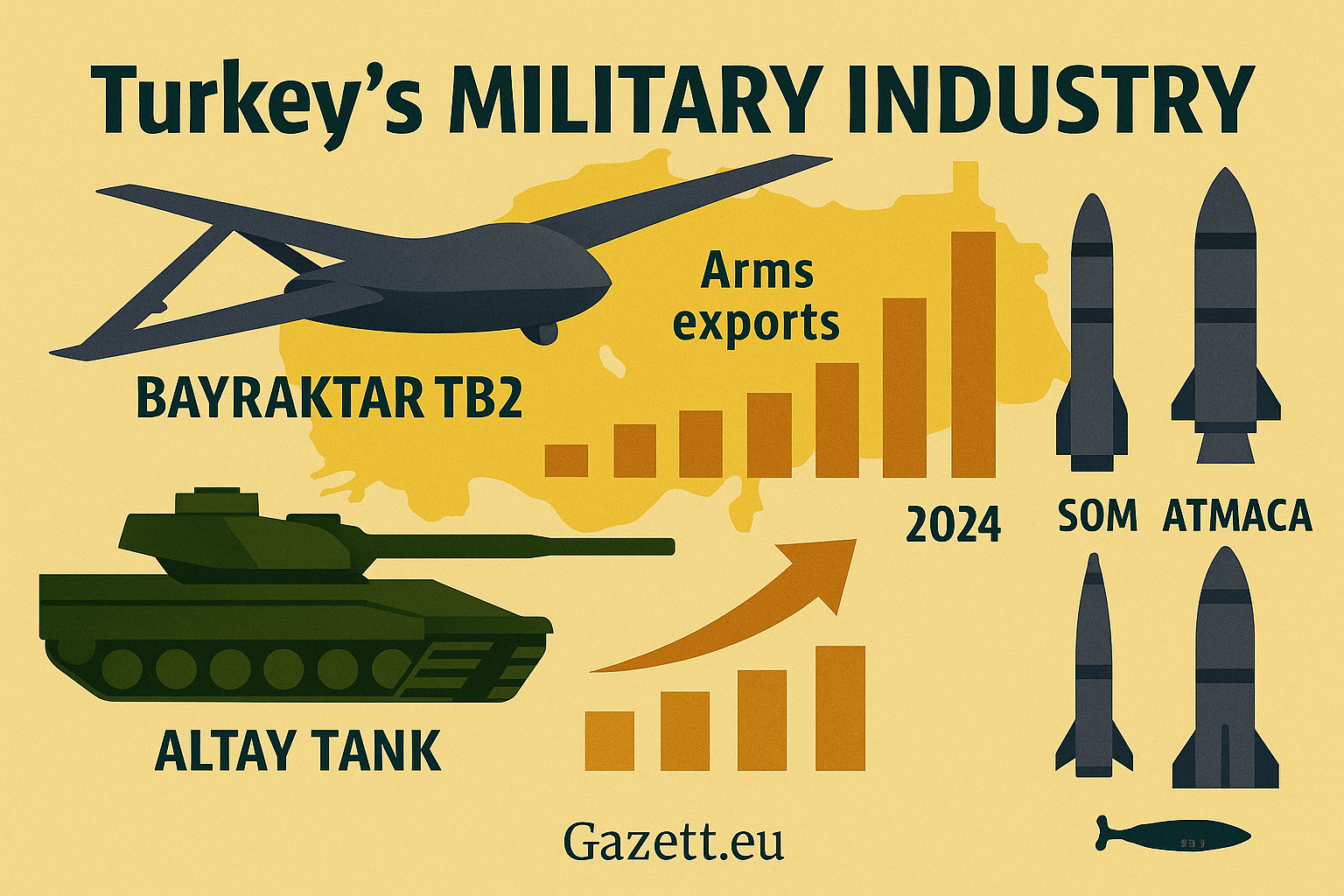
Over the past decade, Turkey’s defense industry expansion has positioned the country as a regional arms powerhouse. Flagship platforms like the Bayraktar TB2 drone have gained global notoriety, deployed in multiple live conflict zones—from Eastern Europe to North Africa. The Altay battle tank, developed by Turkish firm BMC, reflects the country’s ambitions for armored supremacy. Meanwhile, guided weapons such as Atmaca anti-ship missiles and SOM cruise missiles add strategic depth to Turkey’s export-ready arsenal.
Turkey’s military manufacturing boom is not just technological—it’s political. Backed by President Erdoğan’s strategic autonomy doctrine, state-owned and private firms like ASELSAN, Baykar, and Roketsan have received unprecedented investment support. In 2024, defense exports hit a record $5.5 billion, up 27% from 2023, according to SIPRI and the Turkish Presidency of Defense Industries.
⚙️ Key Growth Pillars of Turkey’s Defense Industry
- 🛫 Combat-Proven Drone Exports: Bayraktar TB2 and Akinci used in Ukraine, Libya, Syria
- 🛡️ Domestic Tank and Missile Tech: Altay MBT, HISAR air defense, Atmaca missiles
- 🌍 Expanding Global Arms Clients: Sales to Qatar, Azerbaijan, Somalia, and Eastern Europe
- 🏗️ Integrated Industrial Ecosystem: Rise of Baykar, ASELSAN, Roketsan with state subsidies
- 📈 Export Revenue Surge: Turkish arms exports jumped from $2.7B in 2019 to $5.5B in 2024
This rapid militarization is reshaping regional balances, especially in areas like the EU’s security periphery and the volatile Middle East. As Turkey sells drones and missiles to both allies and adversaries, Western policymakers face a classic security paradox: cooperation vs containment.
Source: SIPRI, EU Parliament Briefings, Turkey Defense Export Council
🔥 Proxy Conflicts: Libya, Syria, Azerbaijan, Sudan

Turkey's strategic posture has undergone a dramatic shift from regional containment to proactive power projection. Through a blend of military interventions, drone diplomacy, and economic penetration, Ankara is reshaping battlefield dynamics in a swathe of fragile states.
🛰️ Proxy Theater 1: Libya
- 🔻 Turkish drones decisively turned the tide in favor of the Tripoli government in 2020–21.
- 🏗️ Ankara secured military bases and exclusive economic zones, eyeing control over Mediterranean gas flows.
- 📉 France and Egypt's strategic influence significantly diminished in Western Libya.
🛰️ Proxy Theater 2: Syria
- 🔁 Turkish troops and rebel proxies maintain control over Idlib and northern Syria.
- 🧠 Turkey's Syria policy reflects a "controlled instability" doctrine — limiting Kurdish expansion while bargaining with Russia and Iran.
- 💥 Frequent airstrikes signal unresolved tensions with the U.S.-backed SDF.
🛰️ Proxy Theater 3: Azerbaijan–Armenia (Nagorno-Karabakh)
- 🎯 Turkish Bayraktar drones gave Azerbaijan a major battlefield edge in the 2020 war.
- 📦 Ankara gained strategic access to the South Caucasus transit corridor.
- 🛠️ Joint military drills, tech transfers, and Turkic Union diplomacy followed.
🛰️ Proxy Theater 4: Sudan
- ⚓ Turkey has long sought control of Suakin Island for naval positioning on the Red Sea.
- ⚠️ Recent instability opened the door for Turkish drones and mediation between rival factions.
- 💰 New bilateral trade routes and defense support hint at a longer-term game plan.
In all cases, Turkey’s proxies serve not only military ends but enable geo-economic penetration, pushing infrastructure, arms, and cultural soft power into contested zones.
See also: EU Geopolitics in 2025 | France’s Strategic Pivot
🧭 A Complicated NATO Ally: Black Sea, Baltic, and U.S. Relations
Turkey’s role in NATO in 2025 continues to spark debate, oscillating between being a pivotal security partner and a disruptive ally. While the country remains geographically indispensable to the alliance, its defense posture in the Black Sea, ambivalence toward Russia, and strained ties with the U.S. have created a strategic paradox.
In the Black Sea and Baltic corridors, Turkey hosts crucial NATO infrastructure, including air surveillance and naval bases. However, its delays in approving Sweden and Finland’s NATO bids highlighted Ankara’s ability to leverage membership for domestic and regional gains. This positioning has tested alliance unity and exposed cracks in collective decision-making.
U.S.–Turkey relations remain transactional. While Ankara supports American counterterrorism operations in Syria and the South Caucasus, Washington’s concerns over human rights, press freedom, and the S-400 missile deal remain unresolved. Turkey increasingly asserts itself as a swing power within NATO, influencing the alliance’s posture toward both Eastern Europe and the Indo-Pacific.
🧩 Key Points: Turkey’s NATO Complexity
- 🚢 NATO Infrastructure: Strategic airbases, radar systems, and naval patrols in the Black Sea.
- 🛑 Expansion Delays: Turkey delayed Sweden and Finland’s NATO entry for domestic political leverage.
- 🔁 Divergent Alignments: Partners with Russia on energy and weapons, while operating within NATO command.
- 🌍 Eastern Flank Engagement: Active in Ukraine diplomacy and Baltic air policing.
- 🧭 Indispensable but Disruptive: Turkey shapes NATO’s adaptability in multipolar conflicts.
Internal source: Read how NATO and the EU are recalibrating defense strategy in 2025 →
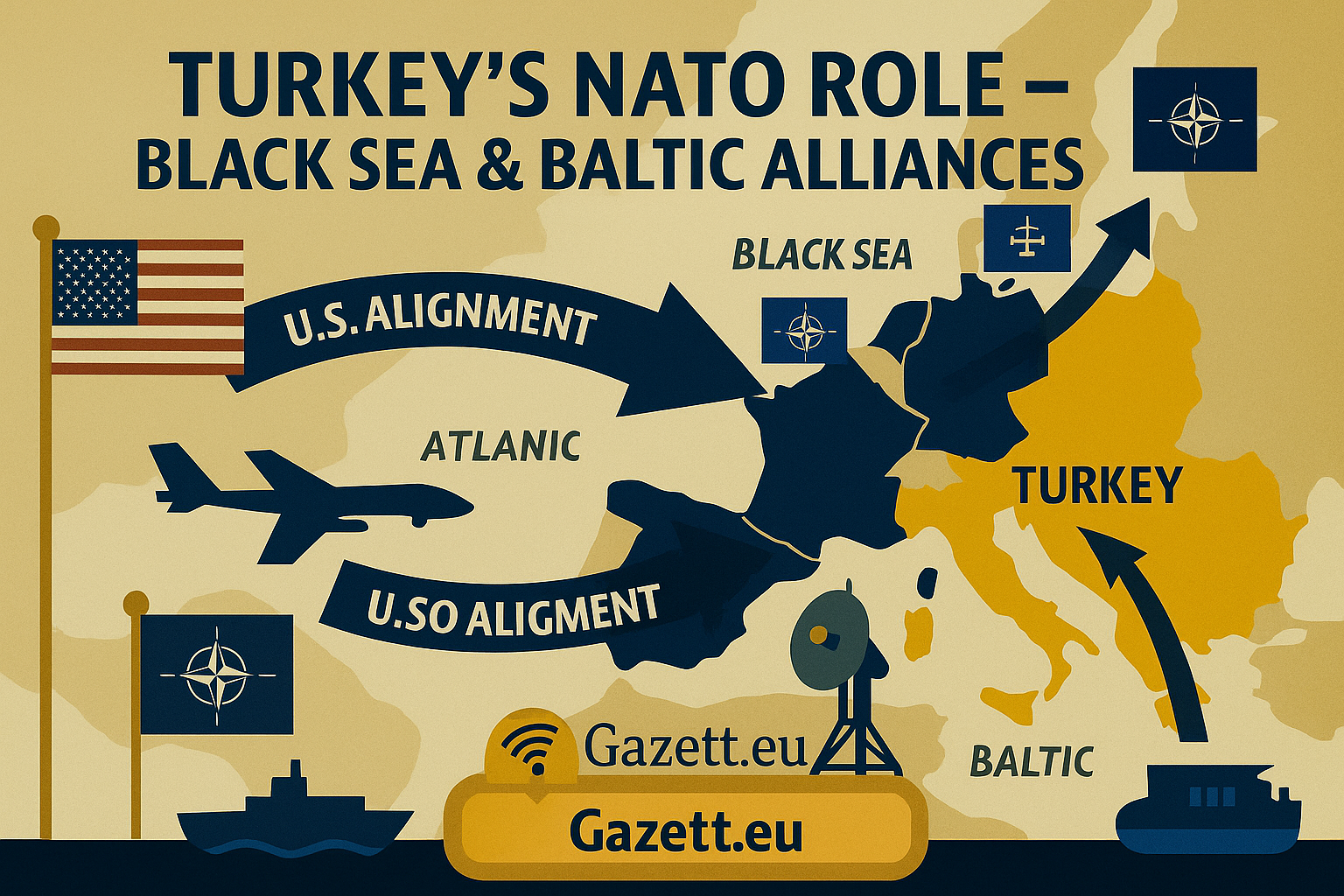
⚖️ Balancing Between Russia, Iran, and the West
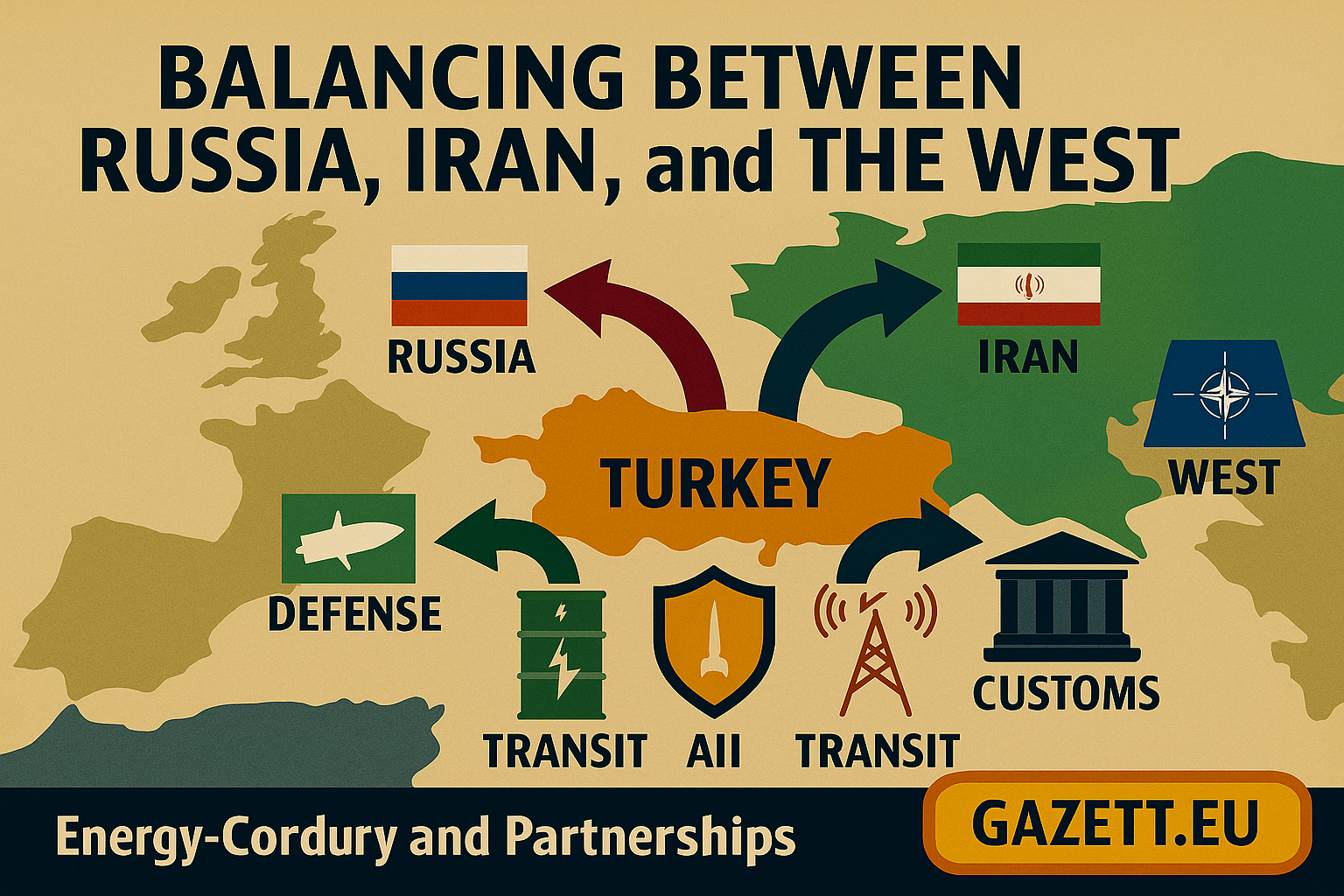
Turkey’s recent foreign policy has been defined by a tightrope strategy, balancing its NATO obligations with deeper tactical cooperation with both Russia and Iran. This triangulation is most evident in conflicts such as Syria, energy transit negotiations, and intelligence-sharing mechanisms.
🧩 Key Tensions and Partnerships
- Russia: While Ankara and Moscow back opposing sides in Syria and Libya, they continue deep cooperation on energy (TurkStream) and arms (S-400 missile systems).
- Iran: Shared interests in curbing Kurdish separatism and stabilizing Syria post-conflict have brought Tehran and Ankara into cautious alignment.
- West: Turkey maintains EU customs union ties and vital NATO infrastructure, while facing sanctions and arms restrictions.
However, with the rise of European defense autonomy and U.S. pressure on NATO unity, Turkey’s positioning is becoming more volatile. Its foreign policy model—sometimes referred to as "strategic hedging"—offers flexibility but raises regional suspicion.
📍 Why It Matters
This triangulated diplomacy risks alienating all sides if not recalibrated. Europe views Turkey’s moves as transactional; Russia sees limits to trust. For Iran, Ankara’s ambitions may clash with its own regional strategy.
📉 Security Dilemmas for Europe and the Middle East
Turkey’s assertive foreign policy and military interventions have introduced complex security challenges for both Europe and the Middle East. While Ankara positions itself as a stabilizing force, its actions often generate friction within NATO and with neighboring countries.
Key Security Concerns:
- Eastern Mediterranean Tensions: Turkey's maritime claims and energy exploration activities have heightened tensions with Greece and Cyprus, raising concerns over potential conflicts in the region.
- Relations with Russia: The acquisition of Russian S-400 missile systems by Turkey has strained its ties with NATO allies, leading to questions about Ankara's strategic alignment.
- Involvement in Syria and Libya: Turkey's military presence and support for certain factions in these countries have complicated international efforts to stabilize the regions.
- Domestic Political Climate: Internal political developments, including concerns over democratic backsliding, have implications for Turkey's relations with Western partners.
These dynamics underscore the delicate balance Turkey must maintain between asserting its national interests and upholding its commitments to international alliances and regional stability.
Sources: Carnegie Endowment, Middle East Forum
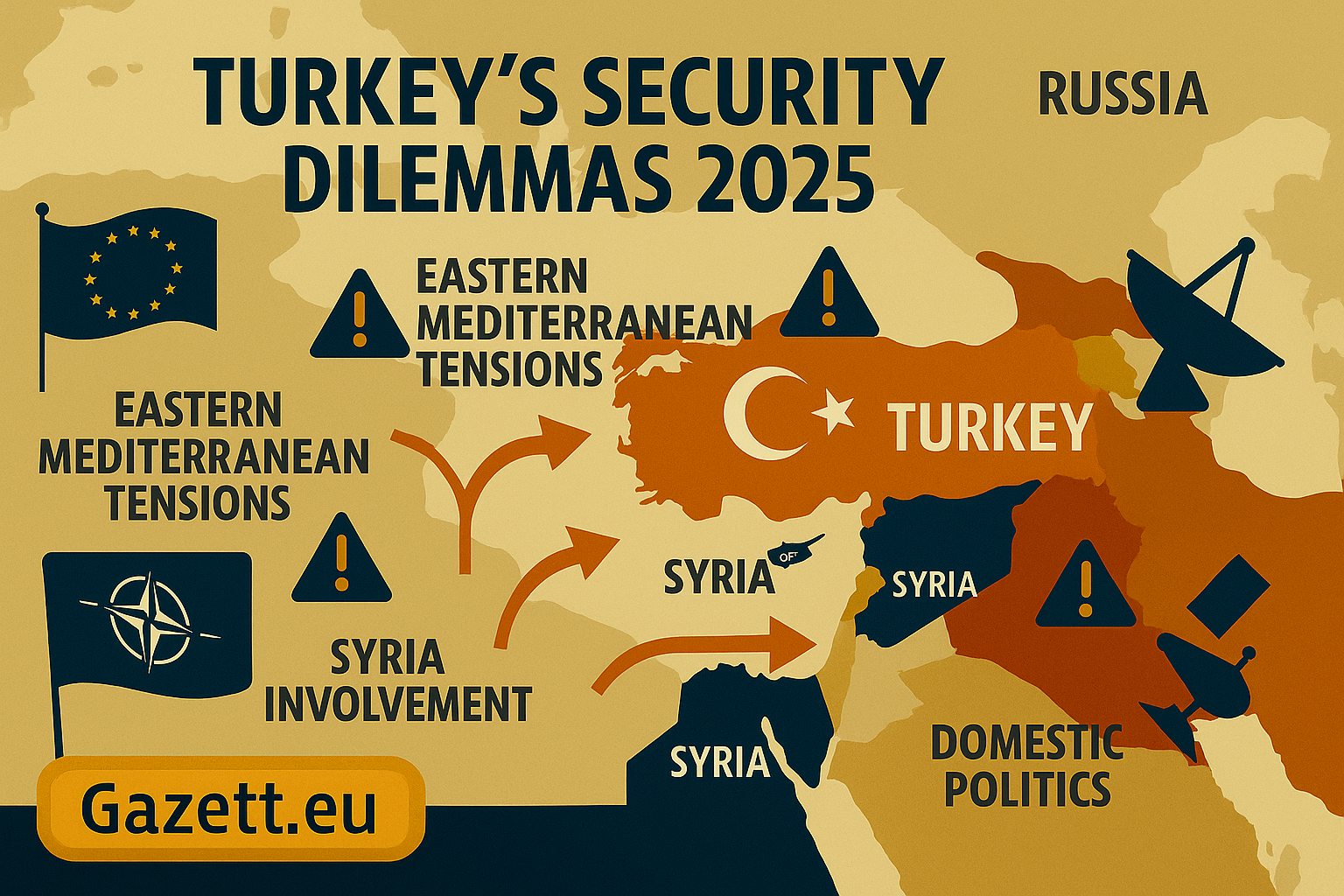
🔮 Future Scenarios: Containment, Collapse, or Cooperation
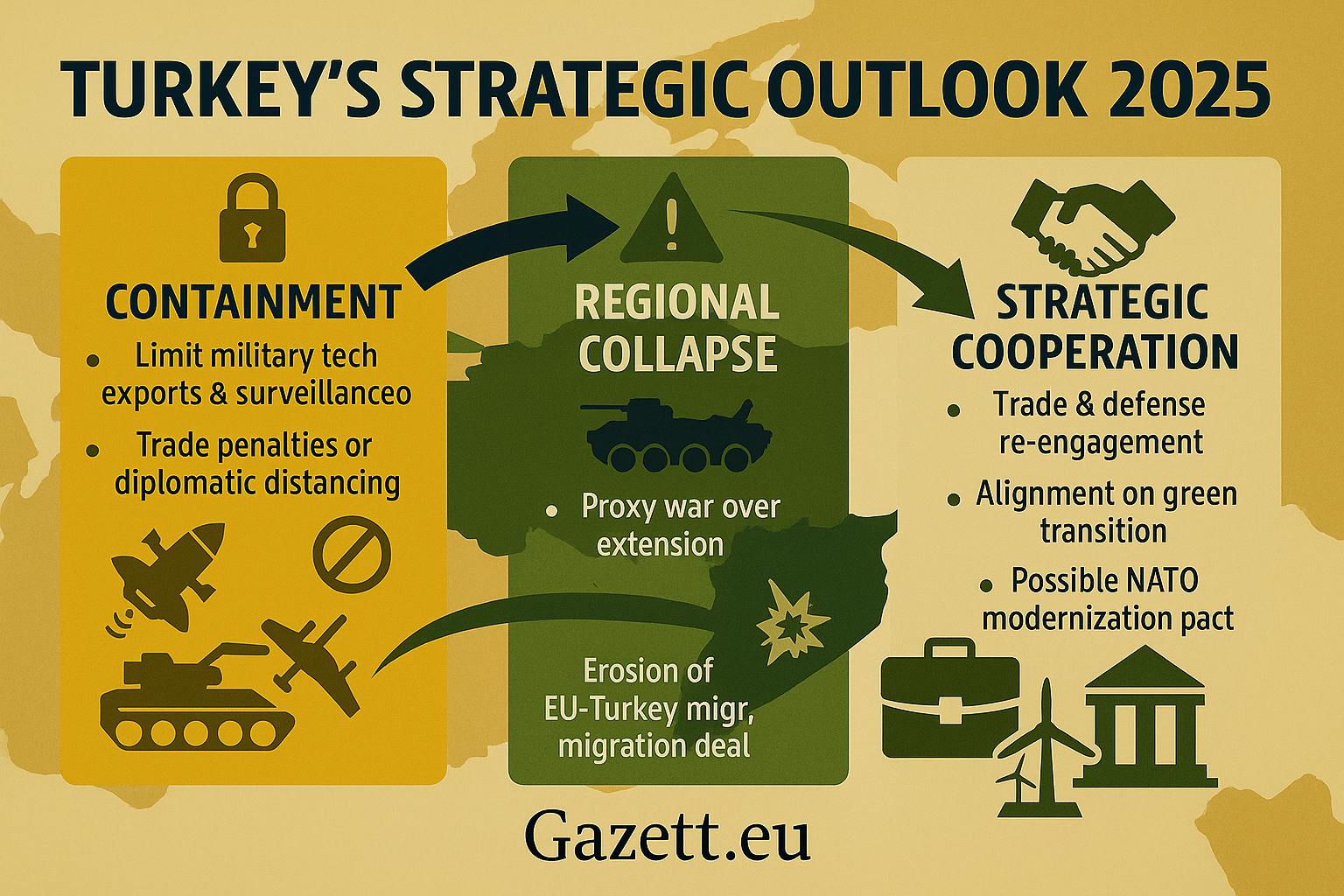
As Turkey navigates its shifting role in the regional power balance, three plausible futures are emerging—each with implications for Europe, NATO, and the broader Middle East. These scenarios will be defined by the interplay between Turkey’s defense ambitions, domestic political direction, and the reaction of international actors.
🔒 1. Containment Strategy
- 🧱 EU and NATO limit military tech exports and surveillance cooperation.
- 🚫 Trade penalties or diplomatic distancing if Ankara leans further toward authoritarian partners.
- 🛰️ NATO limits intelligence-sharing in Black Sea and Baltic operations.
⚠️ 2. Regional Collapse
- 🪖 Internal unrest from inflation or political polarization weakens Ankara’s projection.
- ⚔️ Overextension in proxy wars or conflict with Kurdish groups escalates instability.
- 💣 Erosion of EU-Turkey migration deal and rising border friction with Greece or Bulgaria.
🤝 3. Strategic Cooperation
- 💼 Re-engagement via trade, infrastructure, and digital defense dialogue.
- 🌍 Renewed Turkish alignment with EU green transition goals and joint energy corridor planning.
- 🏛️ Possible NATO modernization pact focused on cyber, AI, and hybrid threats.
🗝️ Key Insights
- Turkey's future role will depend on leadership stability, defense diplomacy, and energy leverage.
- NATO and EU relations could evolve into dual-track engagement and restriction paths.
- Strategic geography ensures Turkey remains indispensable—yet unpredictable.
Internal sources: EU Geopolitics 2025, France’s Pivot to EU Autonomy
✅ Conclusion: Turkey’s Role in a Fragmented Regional Order
Turkey’s evolving posture—part assertive power, part unpredictable ally—presents Europe, NATO, and the broader Middle East with a strategic paradox. Ankara’s growing defense industry, proxy involvements, balancing diplomacy, and friction with the West all underscore a simple reality: Turkey cannot be ignored but neither can it be fully trusted without recalibration.
Moving forward, the key will lie in adaptive strategies by European and American policymakers: engaging where interests align, containing risks where divergence threatens stability, and investing in regional resilience beyond traditional alliance frameworks.
📊 Summary Table: Key Dynamics in Turkey’s Foreign Policy (2025)
| Factor | Current Status (2025) |
|---|---|
| Defense Exports | $5.5B+ led by drones, tanks, missiles |
| Proxy Involvement | Active in Libya, Syria, Azerbaijan, Sudan |
| NATO Relations | Indispensable but disruptive actor |
| Russia & Iran Balancing | High-risk triangulation strategy |
| Future Outlook | Containment, Collapse, or Cooperation pathways |
External sources: Carnegie Europe, CSIS, Atlantic Council